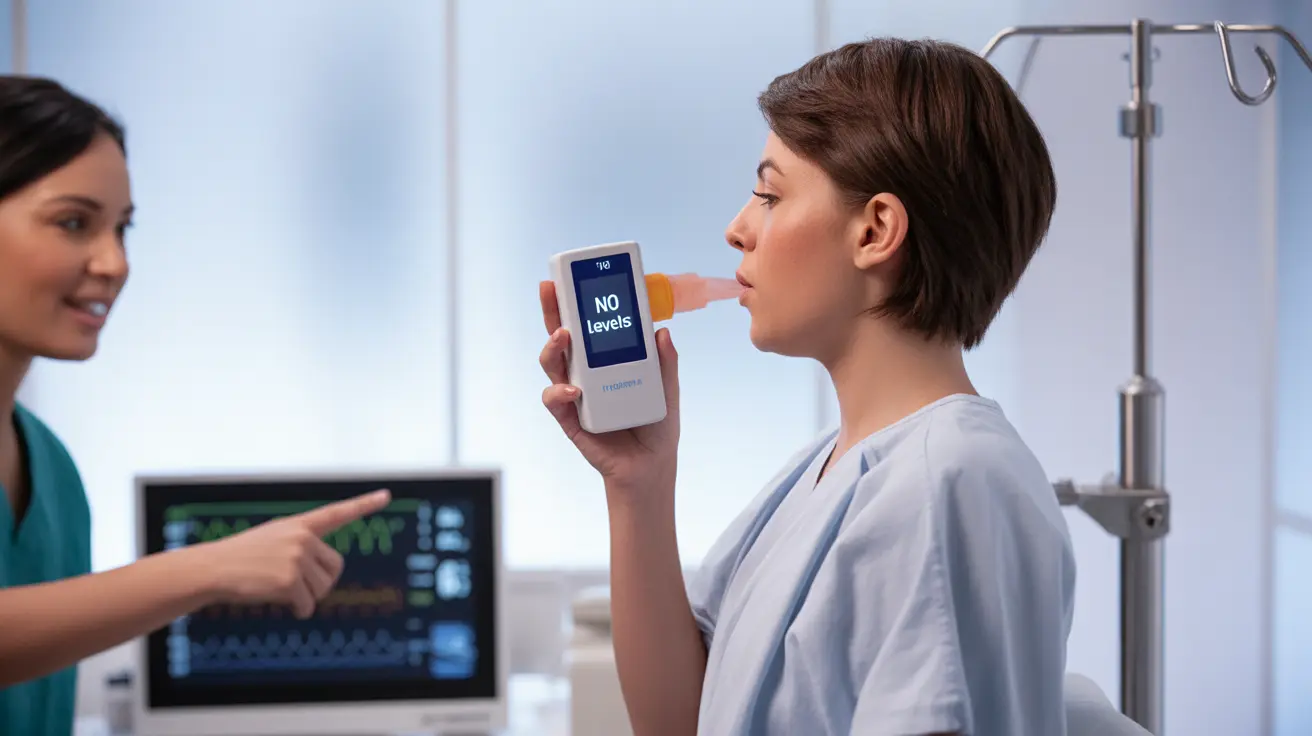The Fractional Exhaled Nitric Oxide (FeNO) test has emerged as a crucial diagnostic tool in the field of respiratory medicine, particularly for asthma management. This non-invasive breathing test measures the levels of nitric oxide in your exhaled breath, providing valuable insights into airway inflammation and helping healthcare providers make more informed decisions about asthma diagnosis and treatment.
Understanding how the FeNO test works and what it reveals about your respiratory health can help you better appreciate its role in asthma care. Let's explore the key aspects of FeNO testing, from how it's performed to what the results mean for your health.
What is a FeNO Test?
A FeNO test is a specialized breathing test that measures the concentration of nitric oxide in your exhaled breath. Nitric oxide is naturally produced by the body, but elevated levels in exhaled breath can indicate inflammation in the airways, which is a hallmark of asthma and other respiratory conditions.
This quick and painless test provides immediate results, making it an efficient tool for healthcare providers to assess airway inflammation and make treatment decisions.
How the FeNO Test Works
During a FeNO test, you'll be asked to breathe into a handheld device that analyzes the nitric oxide content in your exhaled breath. The process is simple and typically involves these steps:
- Inhaling deeply through a filter to ensure clean air enters your lungs
- Exhaling slowly and steadily into the device at a controlled rate
- Maintaining consistent breath pressure for about 10 seconds
- Waiting briefly while the device analyzes your results
Understanding FeNO Test Results
FeNO test results are measured in parts per billion (ppb) and are typically interpreted as follows:
- Less than 25 ppb in adults: Normal range
- 25-50 ppb: Intermediate inflammation
- Greater than 50 ppb: Significant airway inflammation
Your healthcare provider will consider these results alongside other clinical findings to make treatment decisions and adjust medication dosages if necessary.
Benefits of FeNO Testing
FeNO testing offers several advantages in asthma care:
- Provides objective measurement of airway inflammation
- Helps predict response to inhaled corticosteroids
- Assists in monitoring treatment effectiveness
- Supports early detection of asthma exacerbations
- Guides medication adjustments
Preparing for a FeNO Test
Proper preparation ensures accurate test results. Key preparation steps include:
- Avoiding food and drinks for at least 1 hour before the test
- Refraining from strenuous exercise before testing
- Not smoking for at least 1 hour prior
- Informing your healthcare provider about any medications you're taking
Frequently Asked Questions
How does the FeNO test help diagnose asthma, and what are its key benefits?
The FeNO test helps diagnose asthma by measuring airway inflammation through nitric oxide levels in exhaled breath. Its key benefits include non-invasive testing, immediate results, and the ability to predict response to steroid treatments.
What are the normal and abnormal levels of nitric oxide in a FeNO test, and how are results interpreted?
Normal FeNO levels are typically below 25 ppb in adults. Levels between 25-50 ppb indicate intermediate inflammation, while levels above 50 ppb suggest significant airway inflammation requiring medical attention.
How is the FeNO test performed, and what kind of preparation is needed beforehand?
The test involves breathing into a specialized device at a controlled rate. Preparation includes avoiding food, drinks, and exercise for an hour before testing, and informing your healthcare provider about current medications.
Can the FeNO test be used to monitor the effectiveness of asthma treatments, such as inhaled corticosteroids?
Yes, FeNO testing is valuable for monitoring treatment effectiveness, particularly with inhaled corticosteroids. Regular testing can help healthcare providers adjust medication dosages based on inflammation levels.
What are the limitations of using the FeNO test for routine asthma monitoring, and when is it most useful?
While valuable, FeNO testing has limitations including cost, availability, and potential interference from factors like smoking or certain medications. It's most useful for initial diagnosis, predicting steroid responsiveness, and monitoring treatment effectiveness in specific patient populations.




